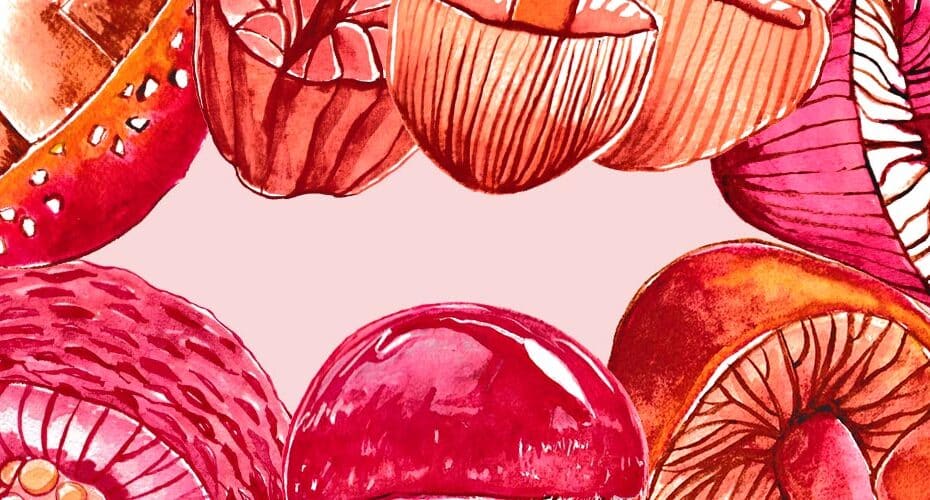Table of Contents
Forests are full of mushrooms, and red mushrooms in particular attract the attention of mycologists and mushroom foragers. This bright colour, often perceived as a sign of danger, encourages caution. Among these mushrooms, the emblematic “Fly Agaric” (Amanita muscaria) stands out, with its bright red cap dotted with white dots, a symbol of both attraction and warning.
However, other red mushrooms also populate our forests, and not all of them are necessarily dangerous. Although many have evolved toxins throughout evolution to protect themselves, some hold surprises beyond their vivid appearance.
Red: a universal message to predators
In nature, the colour red plays a crucial role as a warning signal to predators. This phenomenon, known as aposematism (from the ancient Greek: apó, “to repel”, and sêma, “sign”), involves the presentation of bright colours to indicate the toxicity or inedibility of an organism, thus deterring predators from attacking. The best-known example is undoubtedly the ladybird, whose bright red, dotted wings warn of its unpleasant taste and toxins.
In mushrooms, the colour red plays an essential role as a warning signal. The bright red colour of certain fungi, e.g. the Fly Agaric mushroom (Amanita muscaria) or “the Sickener” (Russula emetica), serves as a powerful visual signal to deter animals and humans from eating them. This helps the mushroom fruiting body (sporophore) remain intact, protecting it and enabling effective spore dispersal.
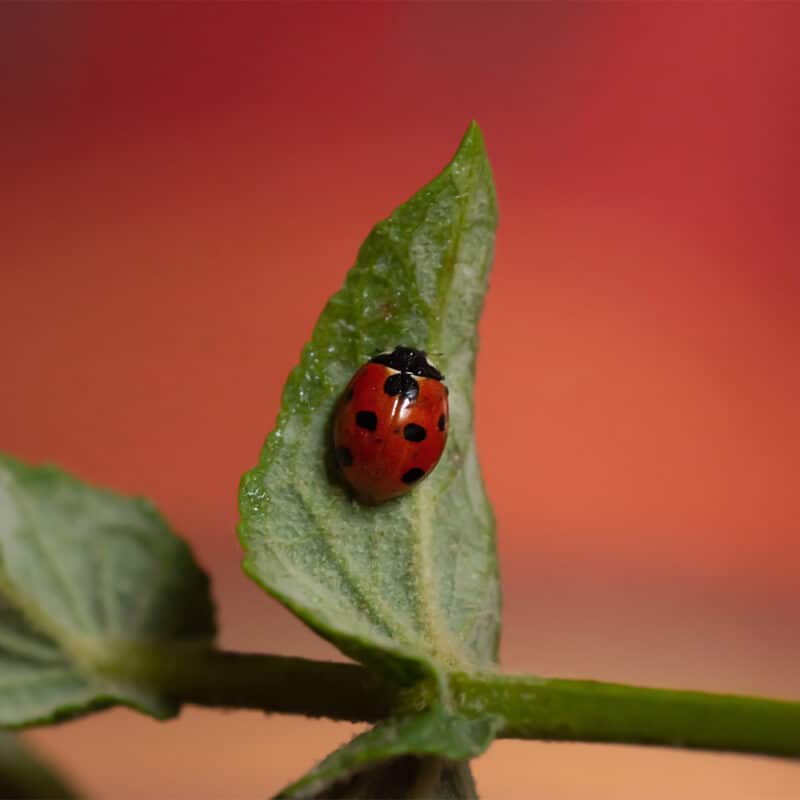
The best-known red mushrooms
Have you seen a red mushroom on your walk in the woods? Hopefully, this is what has led to your curiosity in this article. Let us take you through a range of red, rouge and russet mushrooms that you may have come across on your travels.
First of all, it is important to remember that mushroom identification cannot be improvised. Whether you are an expert or an occasional picker, this activity carries significant health risks. Every year, thousands of cases of mushroom poisoning are reported, sometimes with serious consequences. If you have picked red (or any other colour) mushrooms and are in the slightest doubt about their ID or condition, you mustn’t eat them before they have been checked by a mycological expert.
Amanita muscaria: an emblematic red mushroom
Let’s start with the famous Amanita muscaria. Otherwise known as the “fly swatter” because of its historical use in killing flies, and is also known by the common name “The Fly Agaric”, often compared to the mushrooms of fairy tales.
This mushroom contains toxins such as ibotenic acid and muscimol, which cause hallucinogenic effects and neurological disorders. Historically used for ritual purposes (especially in Siberia), it is now being studied for its psychotropic effects.
If ingested in large quantities symptoms of poisoning include gastrointestinal problems, hallucinations and convulsions have been reported. Interestingly, some animals, such as reindeer, can consume this fungus without adverse effects, intriguing researchers about metabolic differences between species.
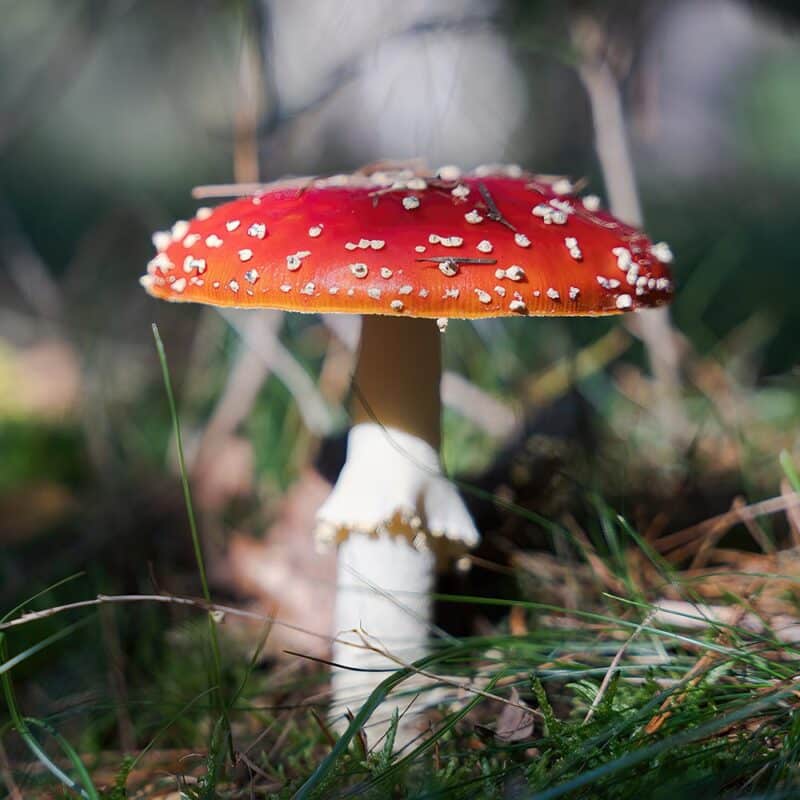
Russula emetica: an etymology that does not bode well!
The second great representative of this colourful journey, Russula emetica is distinguished by its bright red, often shiny and slightly concave cap. According to some mycological databases, russula emetica has a pleasant aroma, reminiscent of apricot or coconut. But make no mistake: despite its seductive aroma, this mushroom is also poisonous. When ingested, it can cause vomiting and severe abdominal pain, which fully justifies its species name ’emetica’, meaning ‘vomiting-inducing‘.
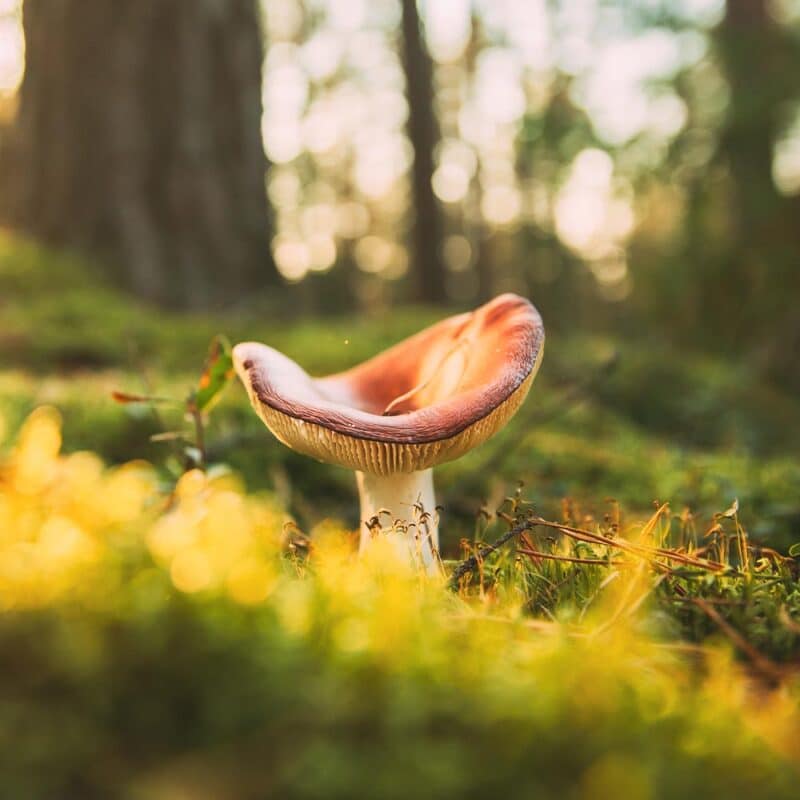
Clathrus ruber: visually pleasing, but that's about it!
Finally, the Red Cage, nicknamed “cœur de sorcière” in France, was first described scientifically by Micheli in 1729. It is a fascinating shiny fungus with a unique appearance and smell. When it first appears, it looks like an egg emerging from the soil. When mature, it “hatches” to reveal an ovoid, grainy, slimy, cage-like structure and emits a stench that can be smelled from several metres away.
This strong, nauseating odour, similar to that of decomposing bodies, attracts a significant number of flies. This olfactory mimicry attracts insects and is an evolutionary marvel which has contributed to its ongoing survival and propagation.
Although the red cage is inedible, its toxicity has not been established. Its repulsive odour and strange appearance discourage its consumption, although some foragers have reported that the egg has a slight “horseradish flavour” (better to eat horseradish straight up?)
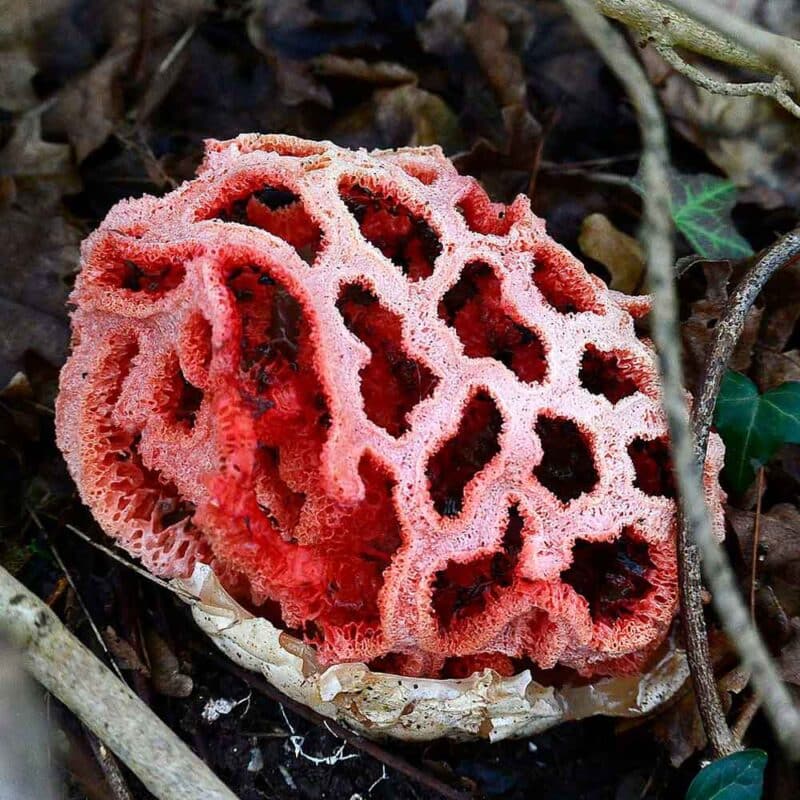
Are there any good edible red mushrooms?
As you may have noticed, many of the red mushrooms are toxic or simply lack culinary interest. This is the case for the Bloody Brittlegill (Russula sanguinaria) and Rosy Brittlegill (Russula rosea), often neglected because of their bitterness or unappetising taste.
However, one mushroom is an exception and is particularly appreciated by connoisseurs: the Bloody Milk Cap 🩸 (Lactarius sanguifluus).
The name comes from the Latin “sanguis” meaning “blood” and “fluus” meaning “to flow”. It owes its name to the wine-coloured “milk” that exudes when it is cut. This mushroom is an excellent edible and some authors consider it to be the best of the milk caps in France. It is particularly appreciated for its firm texture and mild, slightly spicy taste.
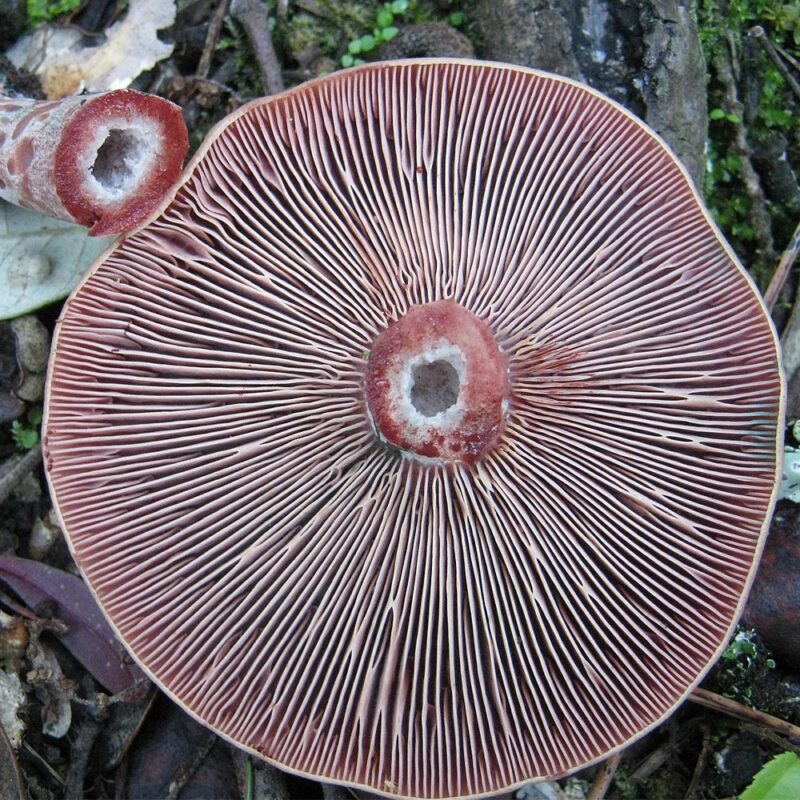
Reishi: the red mushroom that's good for your health
Red mushrooms are not just a visual spectacle in the forest; some of them are also prized for their exceptional medicinal properties. One of the most famous is Reishi, or Ganoderma lucidum, a mushroom that has been widely used in traditional Asian medicine for thousands of years.
The reishi mushroom is recognisable by its shiny, smooth red cap, often in the shape of a large fan. It is also known as the mushroom of immortality because of its supposed beneficial effects on longevity and general health. Used mainly in China, Japan and other Asian countries, the Reishi mushroom is reputed to boost the immune system, reduce inflammation and promote cardiovascular health.
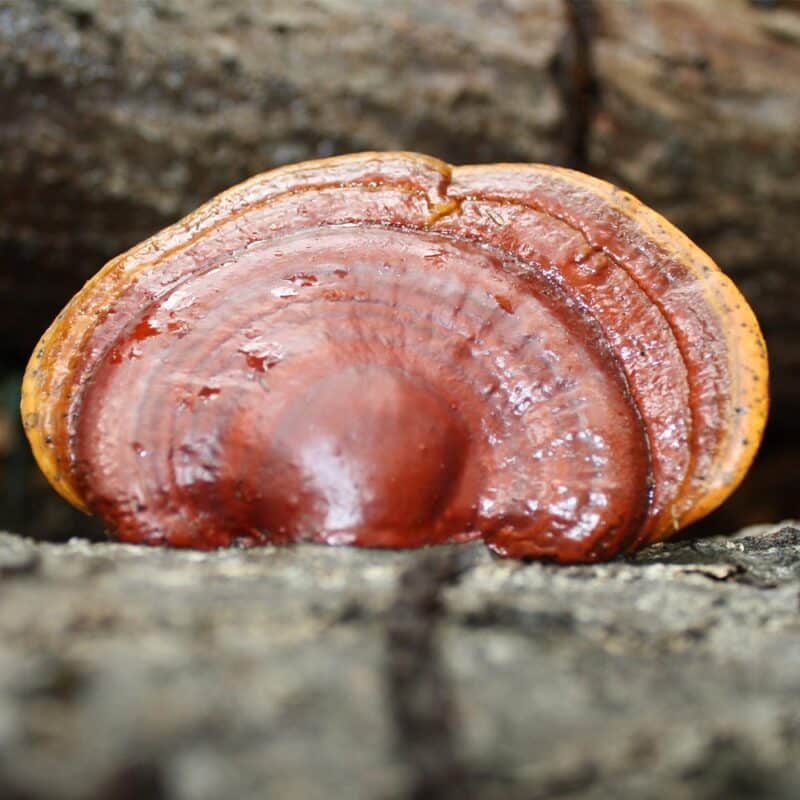
Reishi: a plant with bioactive compounds
This brilliant mushroom contains a unique combination of polysaccharides, triterpenes and other bioactive compounds that give it its many virtues. The polysaccharides present in Reishi, in particular ß-1,3/1,6-D-glucans, are particularly prized for their benefits to the immune system, while the triterpenes are renowned for their antioxidant and anti-inflammatory effects.
To maximise the benefits of Reishi, it is advisable to consume it in concentrated extract form. This method allows the bioactive compounds to be extracted efficiently, ensuring optimal concentration and making it easier to incorporate into your daily routine.
Concentrated Reishi extracts are available in various forms, such as capsules, powders or tinctures, offering great flexibility in consumption.
Hifas da terra: experts in mushrooms
At Hifas da Terra, a biotechnology company specialising in mushroom-based products, we meticulously select the best Reishi strains for their exceptional bioactive molecule profile. Our strains are cultivated under controlled conditions to guarantee their purity and quality. Once harvested, the Reishi undergoes a unique extraction process that preserves and concentrates its most valuable compounds, ensuring that our product is of the highest possible quality.
When you choose Hifas da Terra Reishi extracts, you are choosing a product that is the result of in-depth research and innovative extraction processes. We are committed to offering natural solutions that meet your expectations in terms of quality and efficacy.
Red: a versatile colour in mycology
The world of red mushrooms is captivating in countless ways. Their vibrant colours brighten our forests, while their ecological and medicinal roles offer a wealth of interest for both nature enthusiasts and scientists. Though some of these fungi may be toxic or lack flavour, others, like Reishi, possess powerful medicinal properties, showcasing nature’s remarkable beauty and its potential to heal.
